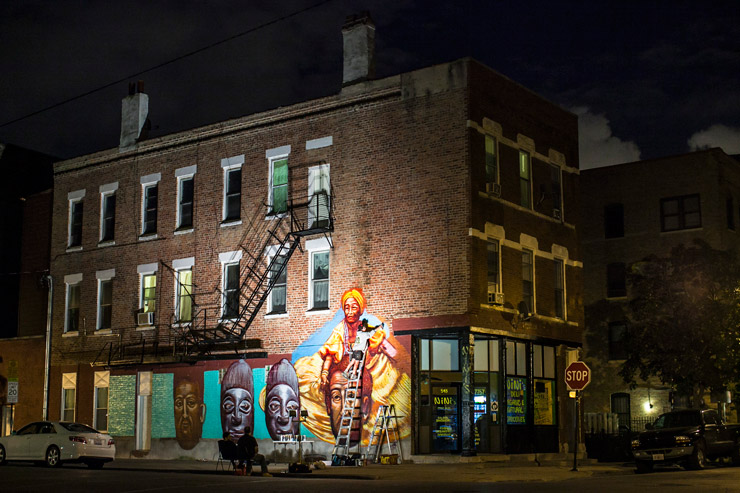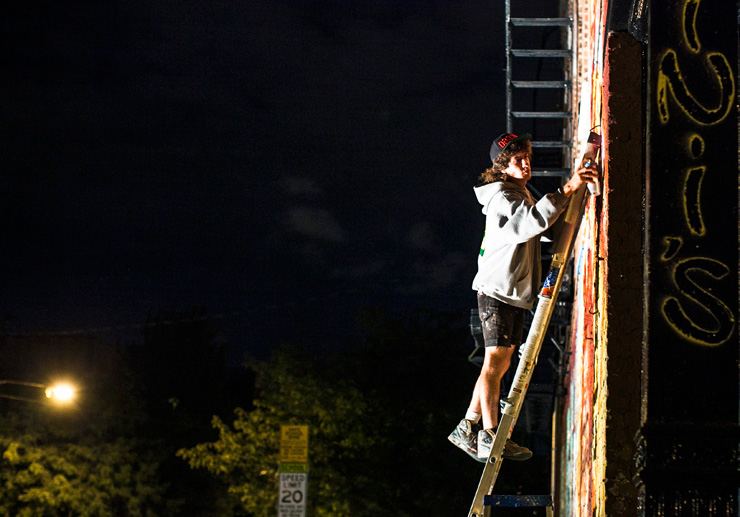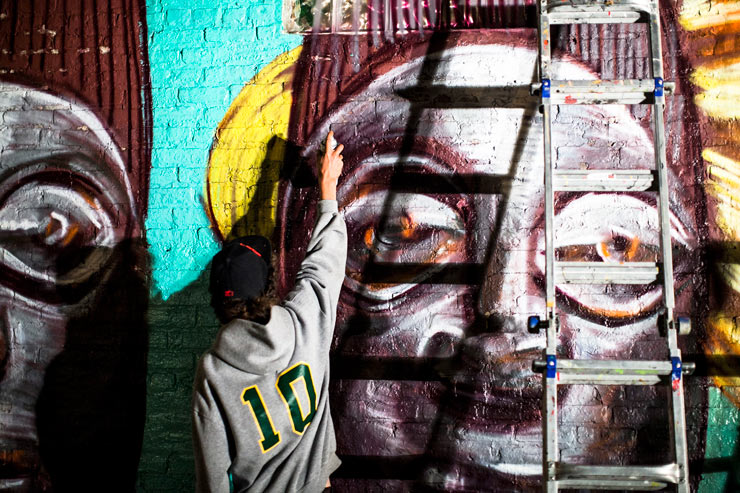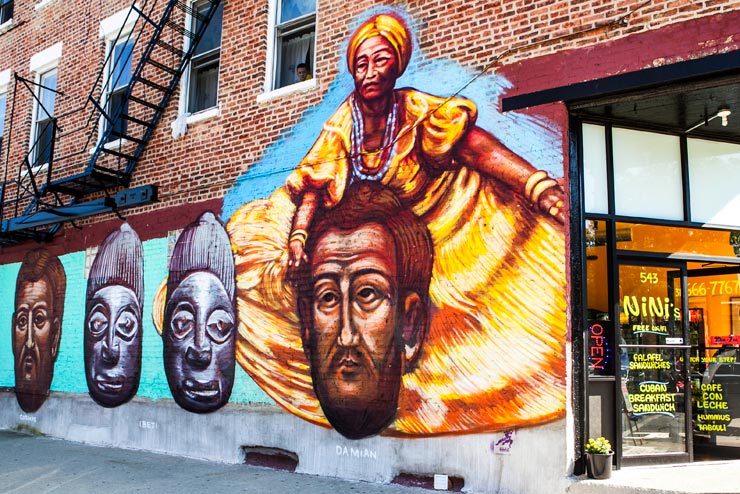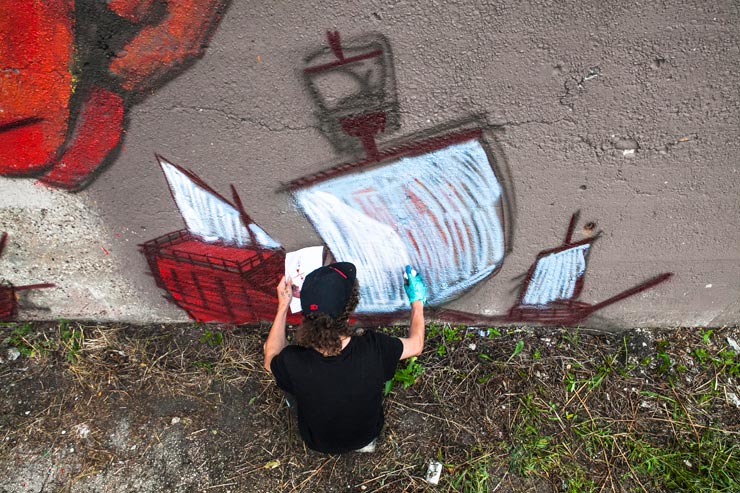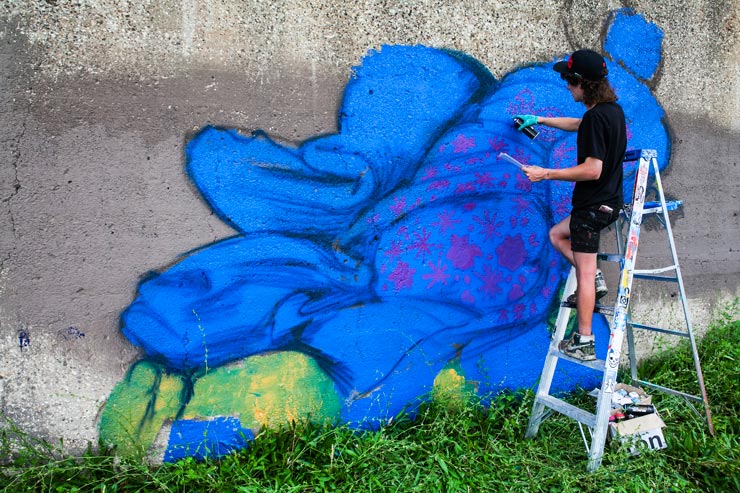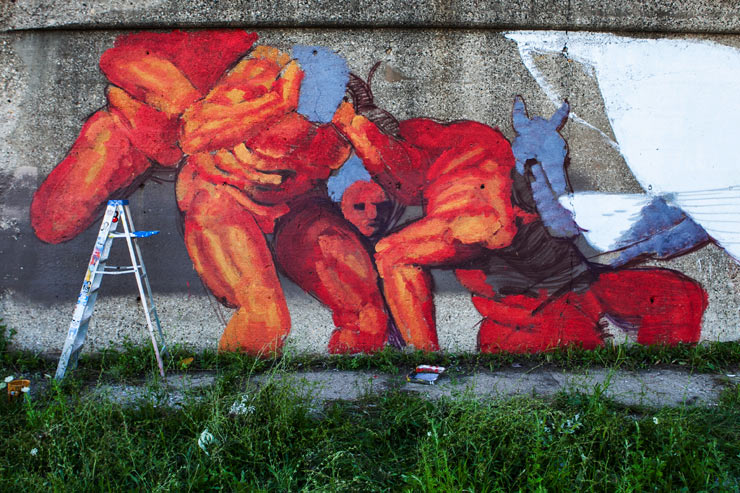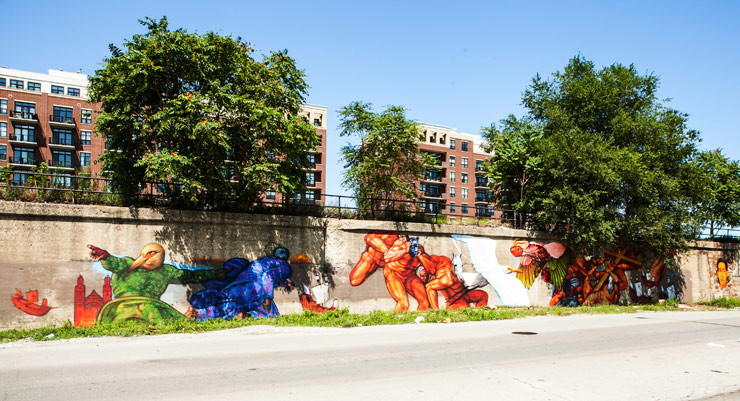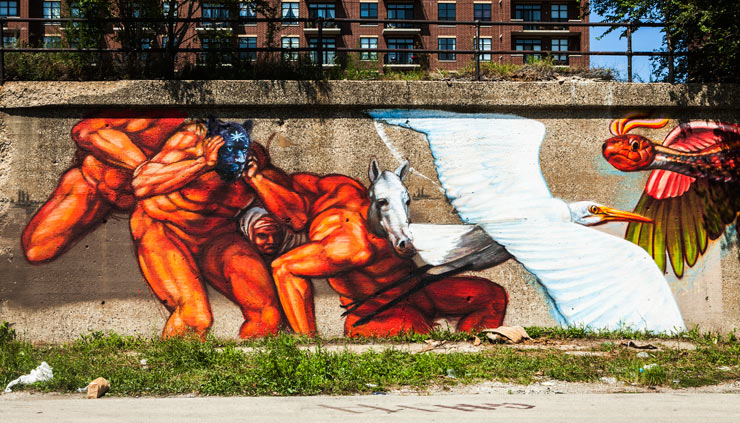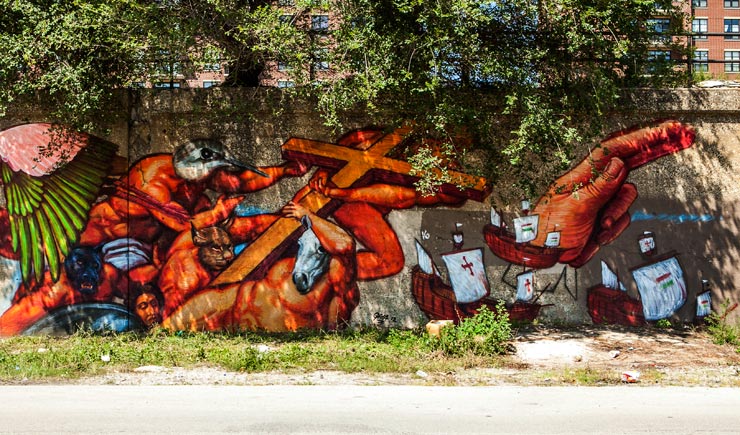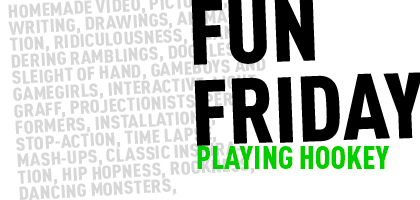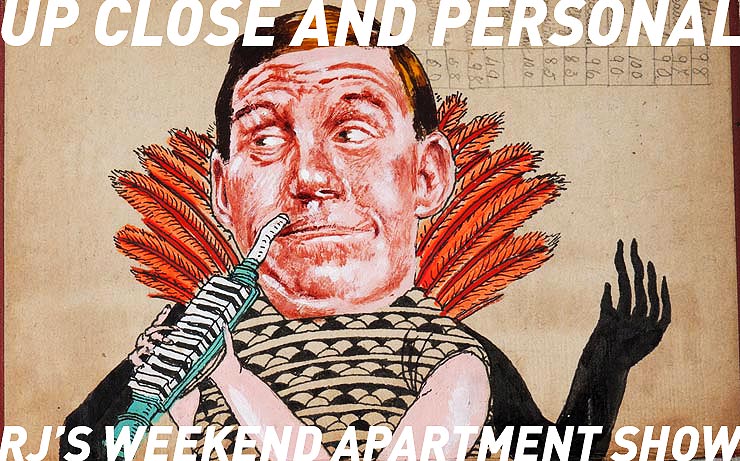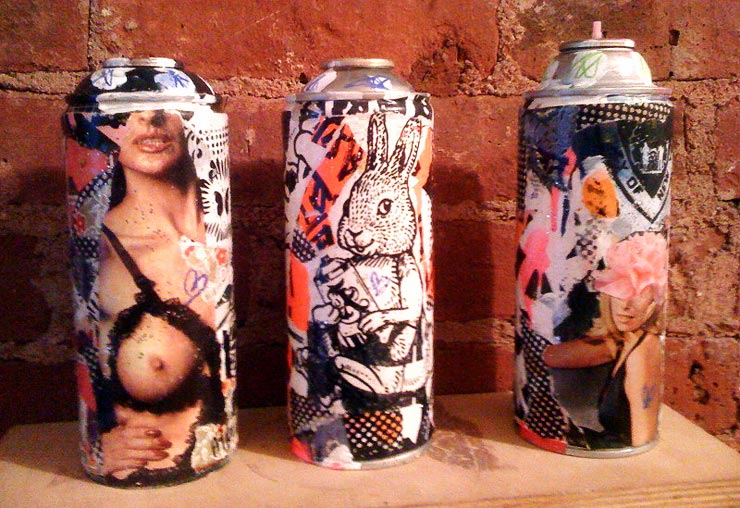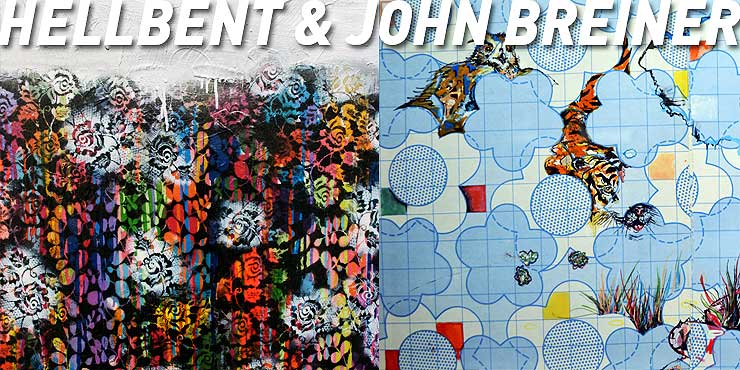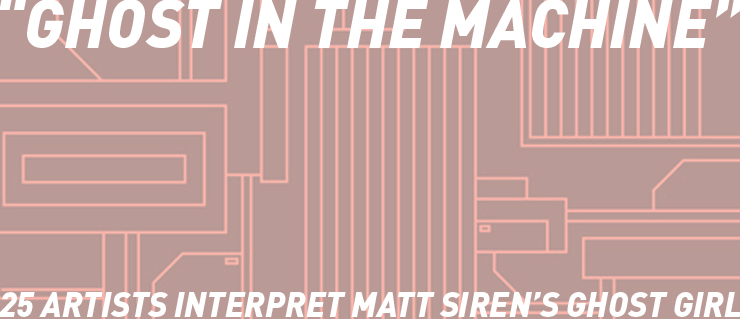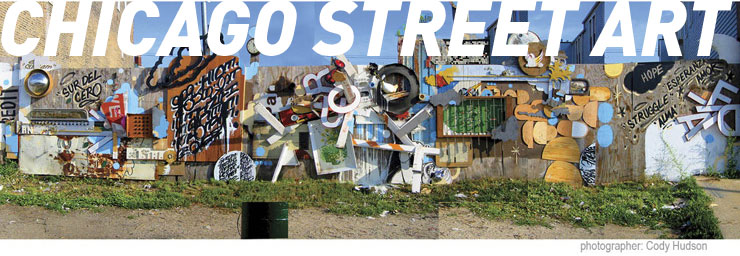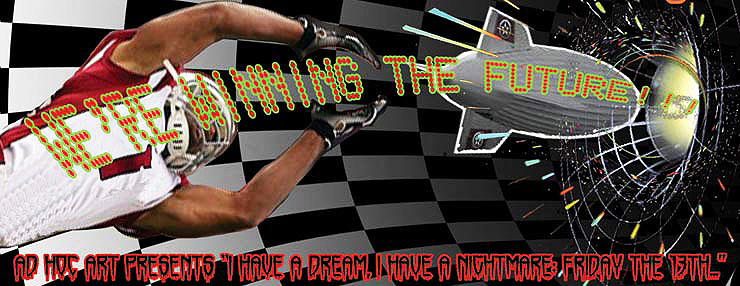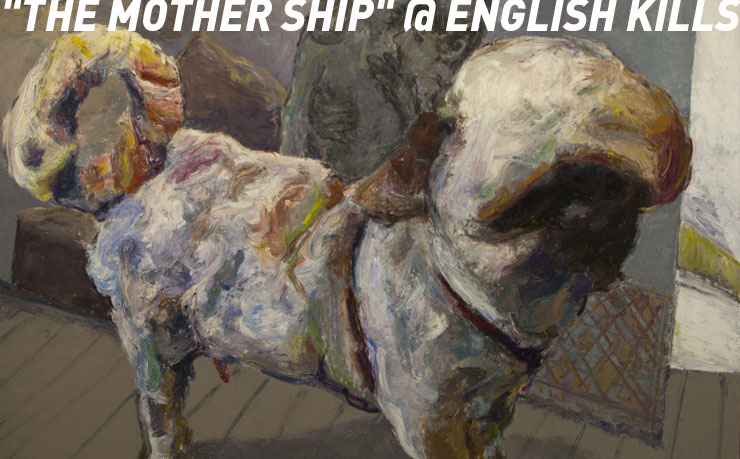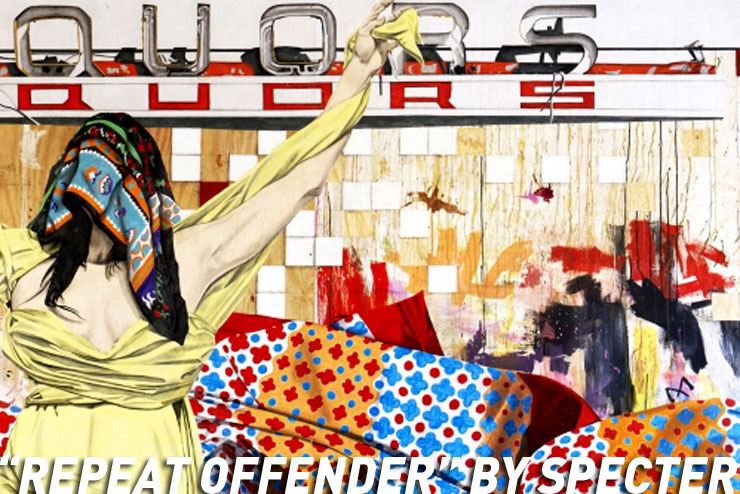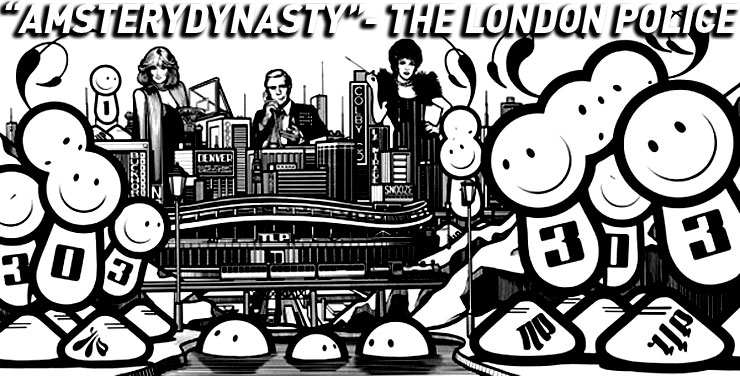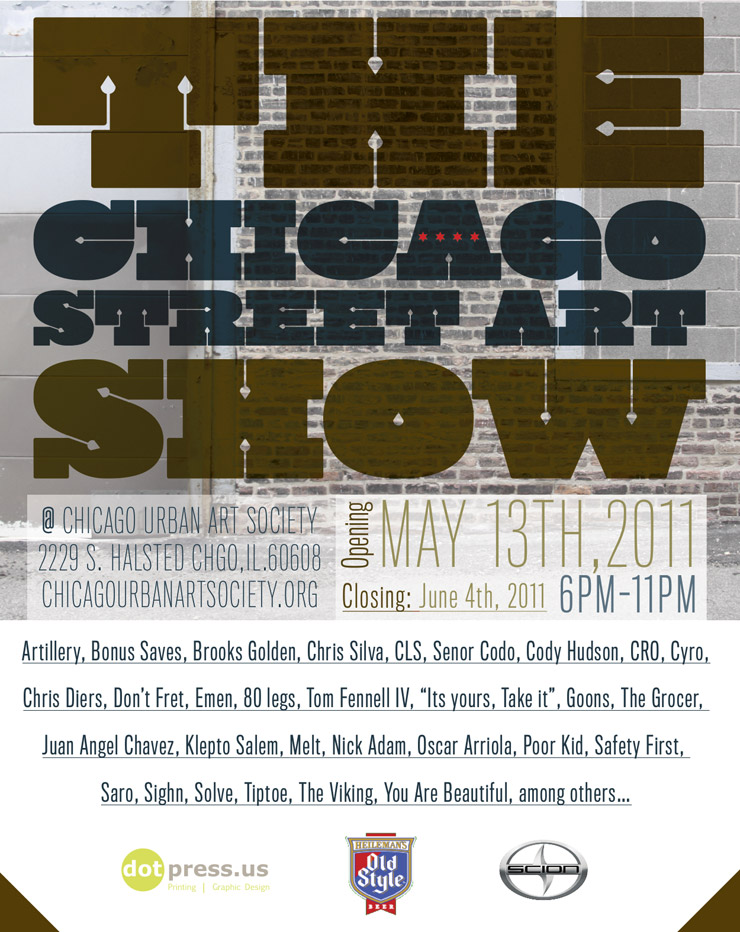Street Artist Gaia visited Chicago last week to hit some walls in his grandly fulsome style with imaginative remixing of classics. Here’s a guy who is perfectly badass about handily switching symbols, metaphors, cultures, belief systems, history, art history. The results are perplexing if you think too hard about it, thrilling if you are willing to detach the forms from their original contexts and appreciate the new associations that their juxtapositions can present.
Hosted by the fellas at Pawn Works Gallery and shot by talented photographer Brock Brake, Gaia created his new pieces as part of their ongoing project “Art in Public Places” in the Pilsen neighborhood and in Chicago’s West Town.
Gaia at Nini’s Cuban Deli in Chicago’s West Town. (photo © Brock Brake)
First off is the piece with African masks and a Cuban female figure that references the historical ties of the two regions. “Thanks to the lovely people at Nini’s Cuban Deli,” says Pawn Works Nick Marzullo of this place tucked into Chicago’s West Town. Gaia says the mural depicts the rich alloy that is Santeria. In it the Catholic twin saints Damian and Cosmas flank the African Ibeji masks.
“These are icons which were imported by the Spanish through Catholicism. African slaves sit underneath a woman performing a ceremony as Oshun, an Oshira of love and the river,” Gaia explains on his Flickr page.
Gaia at Nini’s Cuban Deli in Chicago’s West Town. (photo © Brock Brake)
Gaia at Nini’s Cuban Deli in Chicago’s West Town. (photo © Brock Brake)
Gaia at Nini’s Cuban Deli in Chicago’s West Town. (photo © Brock Brake)
Following are images of a considerably longer mural that the Street Artist did while in the Chicago. In a practice that is often his case, this mural is also site-specific. Reflecting the neighborhood of Pilsen, it’s meant as a visual representation of two other cultures merging that have successively defined it. Gaia says that he is exploring the notion of the word “immigrant”.
Gaia in the Pilsen Neighborhood with The Chicago Urban Art Society and Alderman Danny Solis (photo © Brock Brake)
“It is about the confluence of Polish and Mexican culture, says Gaia, “I just used Michaelangelo figures from the Sistine Chapel’s Last Judgement scene primarily because both cultures share Catholicism – and because the bodies are so dynamic.” That explains why some of the figures looks so Michaelangelic – but with animal heads replacing the original figures human/god-like ones.
Gaia did this one in coordination with Pawn Works, the Chicago Urban Art Society and the office of Alderman Danny Solis.
Gaia in the Pilsen Neighborhood with The Chicago Urban Art Society and Alderman Danny Solis (photo © Brock Brake)
Gaia in the Pilsen Neighborhood with The Chicago Urban Art Society and Alderman Danny Solis (photo © Brock Brake)
Gaia in the Pilsen Neighborhood with The Chicago Urban Art Society and Alderman Danny Solis (photo © Brock Brake)
Gaia in the Pilsen Neighborhood with The Chicago Urban Art Society and Alderman Danny Solis (photo © Brock Brake)
Gaia in the Pilsen Neighborhood with The Chicago Urban Art Society and Alderman Danny Solis (photo © Brock Brake)
<<>>><><<>BSA<<>>><<<>><><BSA<<>>><><<>BSA<<>>><<<>><><BSA
Please note: All content including images and text are © BrooklynStreetArt.com, unless otherwise noted. We like sharing BSA content for non-commercial purposes as long as you credit the photographer(s) and BSA, include a link to the original article URL and do not remove the photographer’s name from the .jpg file. Otherwise, please refrain from re-posting. Thanks!
<<>>><><<>BSA<<>>><<<>><><BSA<<>>><><<>BSA<<>>><<<>><><BSA
 BROOKLYN STREET ART LOVES YOU MORE EVERY DAY
BROOKLYN STREET ART LOVES YOU MORE EVERY DAY